Why New Fields Aren’t Immune to Old Problems
The Science, Systems, and Stakes Behind Stadium Turf & Field Performance
A newly constructed stadium is expected to deliver flawless performance across every dimension—from architecture and acoustics to athlete safety and surface integrity for long-term field design. Yet, the Sydney Football Stadium (SFS), reopened in 2022 after a $828 million redevelopment, quickly faced criticism for its turf conditions. Despite being equipped with modern infrastructure and hybrid grass technology, the field showed signs of instability, slipperiness, and poor traction.
These issues raised questions about how such failures could occur in a brand-new venue. Turf and field problems in elite stadiums are not isolated incidents—they reflect systemic oversights in design, scheduling, and agronomic planning. Grass is a living system, not a static surface, and its health depends on biological, environmental, and mechanical factors.
Stadium turf must withstand intense wear, rapid recovery cycles, and variable climate conditions. When these demands are not matched by sufficient planning and maintenance, even the most advanced fields can fail. The lessons from SFS apply globally—to any venue that treats turf as decoration rather than a performance-critical asset. Let’s dig beneath the surface and uncover what really makes stadium grass succeed—or fail.
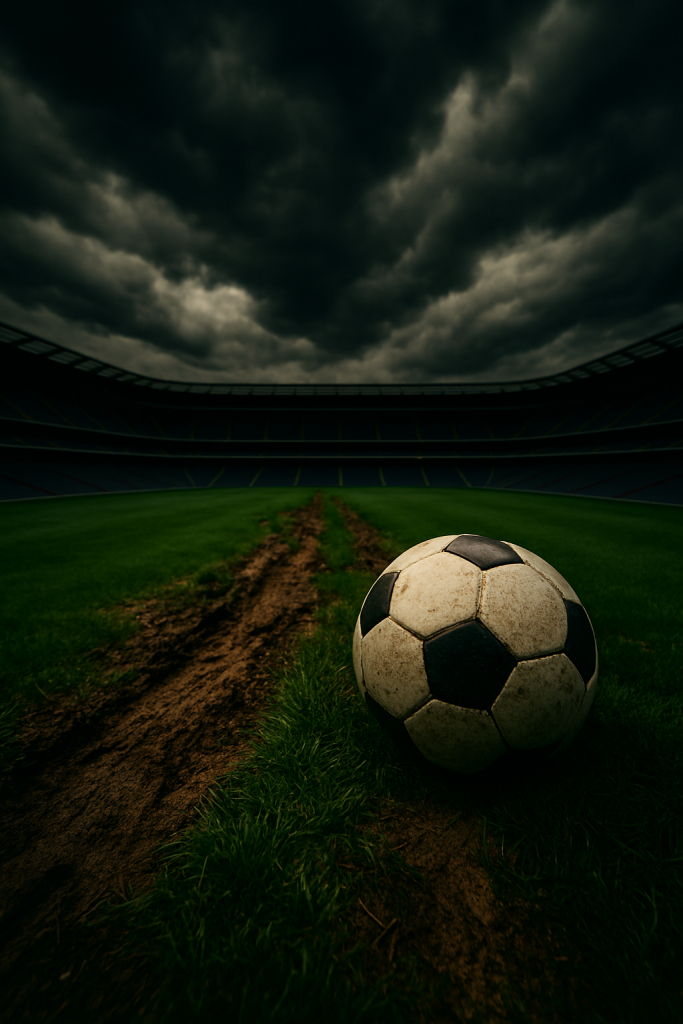
Engineered Layers Beneath the Surface of the Field
Modern stadium turf is built on a multi-layered foundation designed to optimize drainage, root health, and surface stability. The top layer is the grass itself, often a hybrid blend of natural and synthetic fibers. Beneath that lies the rootzone—a carefully mixed substrate of sand, organic matter, and sometimes engineered additives to support root development.
This layer must balance water retention with drainage, allowing roots to breathe while preventing waterlogging. Below the rootzone is a gravel layer that facilitates subsurface drainage, directing excess water into a network of pipes. These pipes are connected to a broader drainage system that prevents pooling and maintains consistent moisture levels. Some stadiums incorporate heating systems to regulate soil temperature and promote year-round growth. Others use precision irrigation systems with moisture sensors to deliver water only where needed.
The entire system must be calibrated to the specific grass species, climate, and usage patterns of the venue. Any mismatch—such as overly sandy rootzones in a humid climate—can lead to turf instability. Construction errors, such as uneven layering or poor compaction, can compromise the system’s integrity. Even small deviations in slope or drainage gradient can cause localized pooling and root rot.
The engineered layers must also withstand mechanical stress from mowing, aeration, and play. Over time, compaction can reduce porosity, limiting oxygen flow to roots and increasing disease risk. Maintaining these layers requires ongoing monitoring and intervention—not just during installation, but throughout the turf’s lifecycle. When these systems are neglected or rushed, the result is a field that looks pristine but performs poorly.
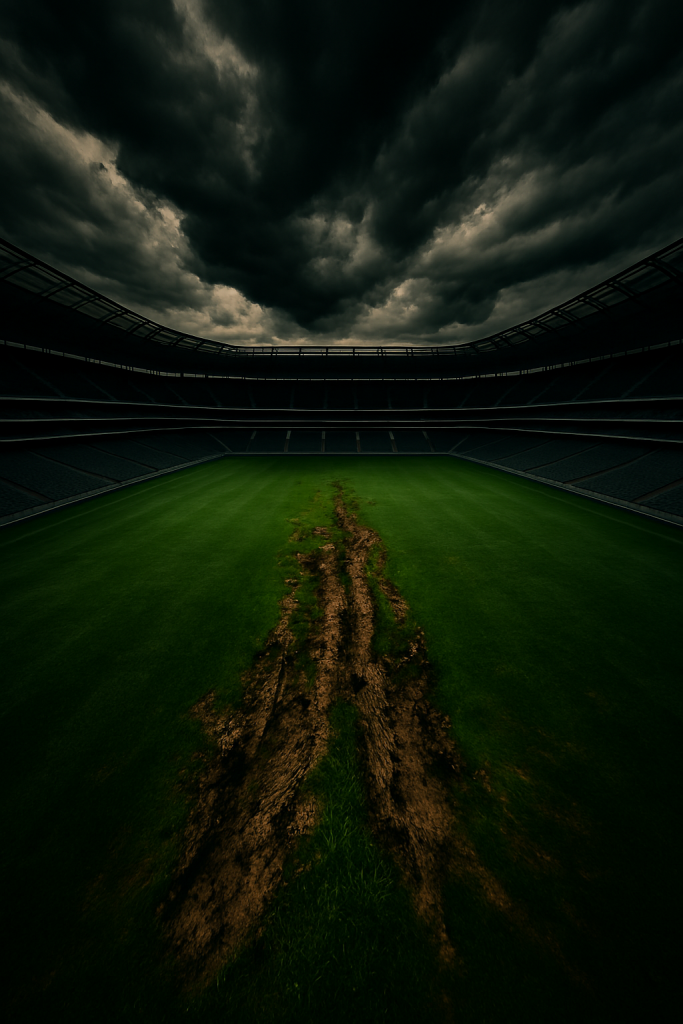
Hybrid Turf Technologies and Their Limits
Hybrid turf systems combine natural grass with synthetic fibers to enhance durability and wear resistance. These systems are popular in elite stadiums because they offer a balance between aesthetics and performance. The synthetic fibers are stitched or woven into the rootzone, anchoring the grass and reducing shear during play. This reinforcement allows the turf to recover more quickly from heavy use, such as football matches or concerts.
However, hybrid systems are not immune to biological limitations. The natural grass component still requires sunlight, water, nutrients, and time to establish. If the grass roots are shallow or underdeveloped, the synthetic fibers cannot compensate for instability. Hybrid turf also requires specialized maintenance, including tailored mowing heights and aeration techniques. Over-aeration can damage the synthetic matrix, while under-aeration can lead to compaction and root suffocation. The choice of grass species is critical—some varieties integrate better with synthetic fibers than others.
Climate compatibility remains a key factor; hybrid systems do not eliminate the need for regionally adapted grass. In hot or humid climates, cool-season grasses may struggle despite reinforcement. Disease pressure can also increase in hybrid systems due to reduced airflow and higher moisture retention. Installation must be precise; uneven stitching or poor fiber distribution can create inconsistent traction.
Hybrid turf is more expensive to install and maintain than traditional grass, requiring skilled labor and specialized equipment. Despite these costs, many stadiums adopt hybrid systems without fully understanding their limitations. When used improperly or maintained inadequately, hybrid turf can degrade rapidly. It may appear intact visually but fail under athletic stress, leading to slips, injuries, and public criticism. Hybrid technology is a tool—not a solution—and must be integrated into a broader agronomic strategy.
The Compressed Construction Timeline Problem
Turf installation often occurs at the end of stadium construction, leaving limited time for root establishment before the venue opens. This compressed timeline is driven by project deadlines, budget constraints, and event scheduling pressures. Grass requires weeks to months to develop a stable root system capable of supporting play. When turf is laid on the field just days before use, roots remain shallow and vulnerable to shear.
The soil ecosystem—critical for nutrient cycling and disease resistance—has no time to develop. Microbial communities, including beneficial fungi and bacteria, take time to colonize the rootzone. Without them, grass struggles to absorb nutrients and resist pathogens. Construction activities can further disrupt soil health, compacting layers and sterilizing microbial populations.
Heavy machinery, dust, and chemical runoff can create hostile conditions for turf establishment. Even with advanced irrigation and fertilization, biological processes cannot be rushed. Stadiums that prioritize visual readiness over agronomic integrity often face early turf failures. The surface may look green and uniform but lack the structural resilience needed for elite sport. Compressed timelines also limit stress testing—critical for identifying weak zones and drainage issues before play begins. Without proper testing, problems only emerge during matches, when stakes are highest.
Recovery from early failure is costly and disruptive, often requiring partial or full field turf replacement. This can delay events, damage reputation, and increase long-term maintenance costs. The solution lies in integrating turf planning into the early phases of stadium design. Allowing sufficient time for establishment is not a luxury—it’s a necessity for performance and safety. Rushed turf is fragile turf, and no amount of technology can substitute for biological maturity.

Sydney Football Stadium’s Field Troubles
The Sydney Football Stadium reopened with high expectations, boasting modern amenities and a hybrid turf system designed for elite performance. Yet within months, players and coaches voiced concerns about the playing surface. Reports described the turf as slippery, unstable, and inconsistent in traction. These issues were observed across multiple matches, affecting both rugby and football codes.
Experts pointed to several contributing factors, including rushed installation and insufficient root establishment. The turf was laid close to the stadium’s opening date, leaving little time for biological integration. Additionally, the venue hosted frequent events, limiting recovery windows between uses. Concerts, training sessions, and matches compressed the turf’s rest periods, increasing wear and compaction. Sydney’s climate added further stress—heavy rainfall followed by intense sun created volatile moisture conditions.
The hybrid grass species used may not have been optimally suited to these fluctuations. Poor airflow and shading from the stadium’s architecture likely exacerbated turf stress. Maintenance regimes may have been generic rather than tailored to the specific turf system. Without precise mowing, aeration, and fertilization schedules, hybrid turf can degrade quickly. Public scrutiny intensified as visible divots and slips disrupted play. The stadium’s reputation suffered, and turf replacement was considered within the first year. These problems reflect a broader pattern—where visual readiness and scheduling override agronomic integrity. SFS’s turf troubles are not unique, but emblematic of systemic oversights in stadium design and operations.
Climate Stress and Microclimate Effects
Climate plays a critical role in turf and the whole field health, influencing growth rates, disease pressure, and root development. Sydney’s climate is characterized by variable rainfall, high humidity, and intense sunlight—all of which affect turf performance. Sudden downpours can saturate the rootzone, leading to waterlogging and root rot.
Conversely, heatwaves can dry out the surface, stressing the grass and increasing evaporation. Stadium architecture often creates microclimates—localized zones with altered sunlight, airflow, and humidity. Roof overhangs and seating angles can block sunlight, reducing photosynthesis in shaded areas. Poor airflow can trap humidity, fostering fungal growth and disease outbreaks. These microclimates are difficult to predict and require site-specific turf management strategies.
Generic maintenance regimes may fail to address localized stress, leading to patchy growth and inconsistent traction. Grass species must be selected based on their tolerance to these conditions. Warm-season grasses like couch or kikuyu may perform better in Sydney’s climate than cool-season varieties. However, aesthetic preferences or legacy choices often override agronomic suitability.
Climate stress also affects soil biology—temperature and moisture fluctuations disrupt microbial communities. Beneficial fungi and bacteria may decline, reducing nutrient availability and disease resistance. Turf systems must be designed with climate adaptation in mind, including drainage, irrigation, and species selection. Failure to account for these factors can lead to rapid turf degradation, even in new stadiums. Climate is not a background variable—it is a primary driver of turf success or failure.
Overuse and Event Scheduling Conflicts
Elite stadiums are often designed as multi-use venues, hosting sports matches, concerts, and community events. While this maximizes revenue and public engagement, it places immense stress on the turf. Each event compacts the soil, shears roots, and disrupts microbial balance. Recovery time between events is critical—grass needs rest to regenerate and stabilize.
When events are scheduled back-to-back, the turf has no opportunity to recover. Concerts are particularly damaging, involving heavy equipment, staging, and foot traffic across the field. Even with protective coverings, compaction and root damage occur. Sports matches vary in impact—rugby scrums, football sprints, and goalmouth activity create high-wear zones. These areas require targeted maintenance and sometimes partial re-turfing. Scheduling conflicts often arise between commercial priorities and agronomic needs.
Venue operators may prioritize bookings over turf health, assuming technology can compensate. However, no system can fully mitigate the biological damage caused by overuse. Turf degradation affects athlete safety, increasing the risk of slips, strains, and injuries. It also impacts game quality—ball roll, bounce, and footing are all influenced by surface integrity.
Long-term overuse leads to chronic turf failure, requiring costly replacement and reputational repair. Sustainable scheduling must balance usage with recovery, integrating agronomic input into event planning. Turf is not a passive surface—it is a living system that demands respect and stewardship.
Global Examples of Turf or Field Failure
Turf and field failures have occurred in elite stadiums across the world, highlighting the universality of the problem. Wembley Stadium in London faced repeated turf issues after its 2007 reopening. Despite multiple relays, the pitch struggled with wear due to frequent non-sporting events. Players complained of instability, and matches were disrupted by poor footing.
MetLife Stadium in New Jersey drew criticism for its synthetic turf, which was linked to increased injury rates. NFL players and coaches called for a return to natural grass, citing safety concerns. Stade de France in Paris experienced turf degradation during multi-sport seasons, prompting a shift to hybrid systems. Even Tottenham Hotspur Stadium, with its retractable pitch, faced challenges in maintaining surface quality. These examples show that turf failure is not limited by geography or budget. It stems from systemic issues—overuse, poor planning, and insufficient agronomic integration.
Technology alone cannot prevent failure; biological systems require time, care, and adaptation. Global venues must learn from each other, sharing best practices and avoiding repeated mistakes. Turf integrity is a universal concern, affecting athletes, fans, and the reputation of sport itself.
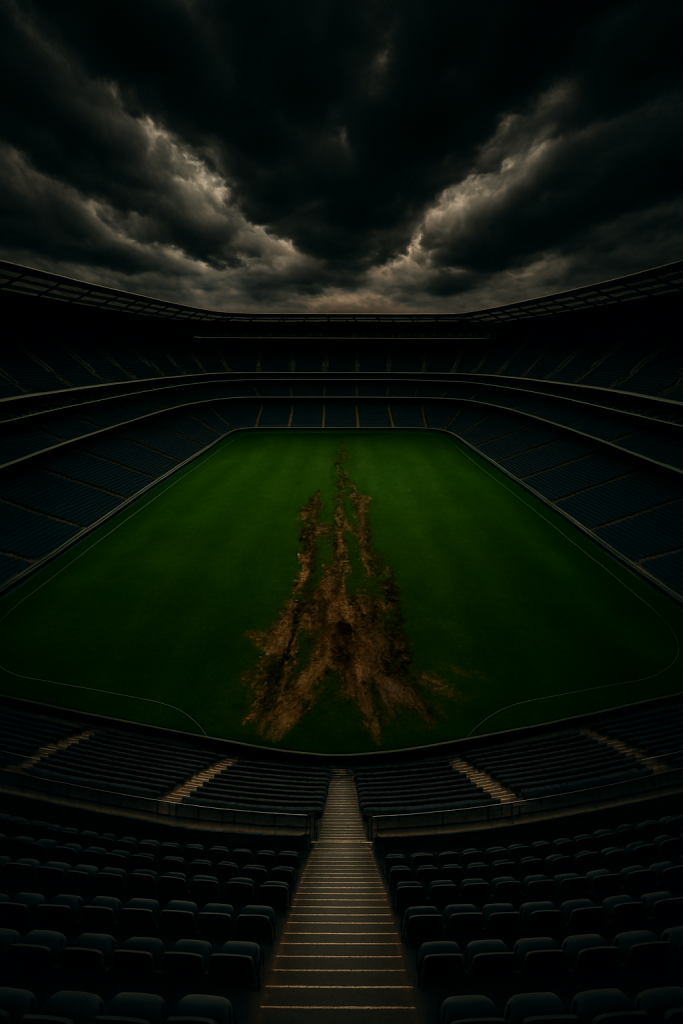
The Biological Nature of Turf
Grass is a living organism, governed by biological processes that cannot be rushed or ignored. It requires sunlight for photosynthesis, water for hydration, and nutrients for growth. Roots anchor the plant and absorb essential minerals from the soil. These roots depend on a healthy microbial ecosystem—fungi, bacteria, and organic matter that facilitate nutrient cycling.
Soil compaction reduces porosity, limiting oxygen flow and hindering root development. Excess moisture can lead to anaerobic conditions, promoting root rot and disease. Turf health is also influenced by temperature, humidity, and seasonal cycles. Different grass species have distinct growth patterns—some thrive in summer, others in cooler months. Maintenance must align with these cycles, adjusting mowing, fertilization, and irrigation accordingly.
Biological stress accumulates over time, especially under heavy use. Without rest and recovery, grass becomes thin, brittle, and vulnerable to damage. Disease outbreaks can spread rapidly in weakened turf, requiring chemical intervention. However, overuse of fungicides and pesticides can further disrupt soil biology. Turf management is a balancing act—supporting growth while minimizing stress. Treating grass as infrastructure rather than biology leads to predictable failure. Understanding its living nature is essential for long-term performance and safety.
Grass Selection and Regional Compatibility
Choosing the right grass species is foundational to turf success, especially in stadium environments with high wear and variable climate. Grass varieties differ in their tolerance to heat, shade, moisture, and mechanical stress. In Sydney’s climate, warm-season grasses like couch (Bermuda) and kikuyu are often preferred due to their drought resistance and rapid recovery.
Cool-season grasses such as ryegrass or fescue may offer better winter color but struggle under summer heat and intense use. Hybrid systems must also consider species compatibility with synthetic reinforcement—some grasses integrate better with stitching technologies than others. Selection must account for shade patterns created by stadium architecture, which can limit sunlight in key zones. Grass that thrives in full sun may fail in shaded corners or under roof overhangs. Soil type also influences species performance—sandy soils drain quickly, while clay retains moisture.
The rootzone mix must be tailored to the chosen grass, ensuring optimal nutrient availability and drainage. Disease resistance varies by species, with some more prone to fungal infections in humid conditions. Recovery rate is critical in high-use venues—grasses that regenerate quickly reduce downtime and maintenance costs. Aesthetic preferences often influence selection, but visual appeal should not override functional performance. Legacy choices—based on tradition or previous installations—may persist even when unsuitable for current conditions.
Regional trials and agronomic testing can guide species selection, but are often skipped in favor of expedience. Poor species choice leads to patchy growth, inconsistent traction, and increased replacement frequency. Compatibility is not just about climate—it’s about the entire system: soil, architecture, usage, and maintenance. A well-matched grass species is the foundation of a resilient, high-performance turf.
Soil Health and Microbial Ecosystems
Healthy turf begins with healthy soil—a dynamic ecosystem teeming with life. Beneath the surface, billions of microorganisms work to break down organic matter, cycle nutrients, and protect roots from disease. Fungi form symbiotic relationships with grass roots, extending their reach and improving nutrient uptake.
Bacteria help fix nitrogen and decompose organic material, enriching the rootzone. Construction often sterilizes soil, removing these beneficial organisms through compaction, excavation, and chemical exposure. Rebuilding microbial communities takes time and care, often requiring compost amendments or biological inoculants. Soil structure affects microbial activity—porous, well-aerated soils support diverse life, while compacted soils suffocate it.
Organic matter provides food for microbes and improves water retention and nutrient exchange. Turf systems must balance sand content for drainage with organic content for biological support. Overly sandy rootzones may drain well but lack microbial resilience. pH levels influence microbial diversity—most turf species prefer slightly acidic to neutral conditions. Fertilizer regimes must support microbial health, avoiding excessive salts or synthetic inputs that disrupt balance. Aeration promotes oxygen flow, essential for microbial respiration and root vitality.
Without active microbial ecosystems, turf becomes chemically dependent and biologically fragile. Disease outbreaks are more common in sterile soils, requiring costly chemical treatments. Soil testing should include biological indicators—not just nutrient levels but microbial biomass and diversity. Turf managers must treat soil as a living foundation, not just a medium for grass. Investing in soil health pays dividends in turf durability, recovery, and performance. Microbes are invisible allies—neglect them, and the entire system suffers.
Maintenance Regimes and Agronomic Precision
Elite turf demands precise, adaptive maintenance tailored to species, climate, and usage. Mowing height affects photosynthesis, root depth, and wear tolerance. Cutting too short weakens the grass, while cutting too high can encourage disease. Frequency matters—regular mowing promotes lateral growth and density. Fertilization must be balanced, supplying nitrogen, phosphorus, and potassium in appropriate ratios. Over-fertilization can burn roots and disrupt microbial balance, under-fertilization leads to nutrient deficiencies and poor growth.
Irrigation must match evapotranspiration rates, avoiding both drought stress and waterlogging. Smart irrigation systems use soil moisture sensors to guide watering schedules. Aeration relieves compaction, improves oxygen flow, and stimulates root growth. Timing is critical—aerating during peak stress can damage turf rather than help it. Topdressing with sand or compost smooths the surface and enhances soil structure. Disease monitoring requires regular scouting and early intervention.
Integrated pest management (IPM) minimizes chemical use by combining cultural, biological, and mechanical controls. Maintenance must adapt to seasonal changes—cool-season grasses require different care than warm-season varieties. High-use zones like goalmouths and sidelines need targeted attention, including overseeding and patch repair.
Equipment calibration ensures consistent mowing and application rates. Staff training is essential—skilled groundskeepers understand turf physiology and respond to subtle changes. Budget constraints often limit maintenance, but cutting corners leads to long-term degradation. Data-driven regimes—using sensors and analytics—can optimize inputs and predict stress. Agronomic precision is not optional in elite venues—it’s the backbone of turf performance. Without it, even the best systems will fail under pressure.
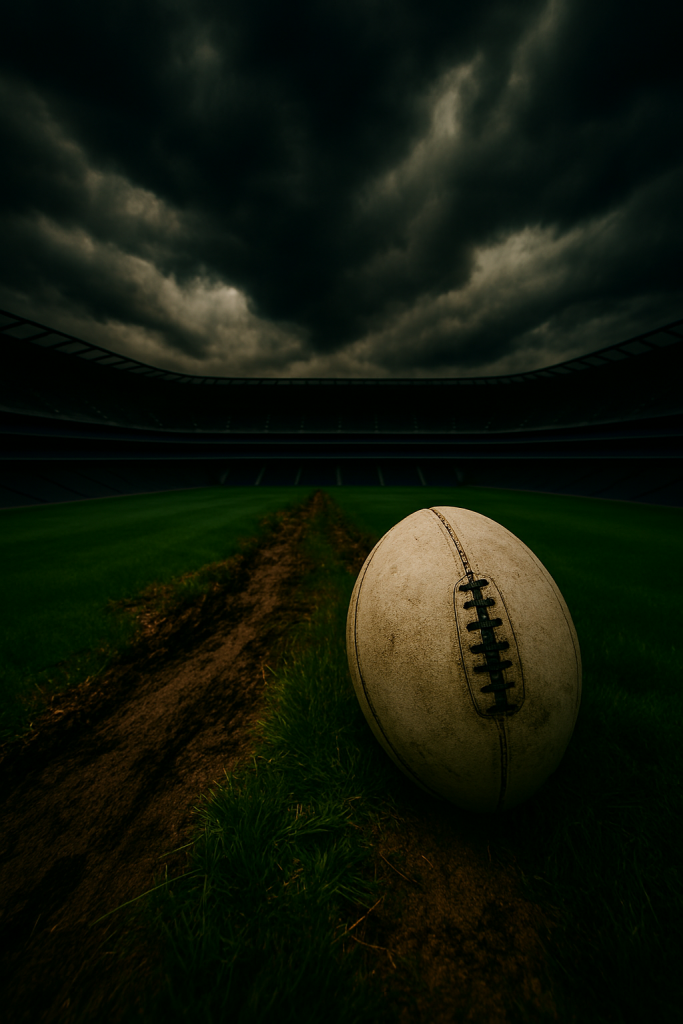
Architectural Impacts on Turf Viability
Stadium architecture plays a significant role in turf health, influencing light exposure, airflow, and microclimate formation. Roof design affects how much sunlight reaches the field—overhangs and cantilevers can cast shadows that inhibit photosynthesis. Seating angles and structural elements may block morning or afternoon sun, creating uneven growth patterns. Airflow is critical for turf respiration and disease prevention; enclosed designs can trap humidity and reduce ventilation.
Poor airflow fosters fungal growth and increases moisture retention, leading to slippery surfaces. Drainage design must integrate with architectural slope and runoff systems. If water pools near structural elements, rootzone saturation and turf decay can occur. Shade-tolerant grass species may be required in low-light zones, but these often have slower recovery rates. Artificial lighting systems—such as grow lights—can supplement sunlight but are expensive and energy-intensive. Stadium orientation (north-south vs. east-west) affects sun angles and seasonal light distribution. Wind tunnels and thermal gradients may form due to architectural geometry, influencing turf stress.
Access for maintenance equipment must be considered—tight corners or limited entry points can hinder care. Subsurface heating and cooling systems must be coordinated with structural load-bearing and utility layouts. Acoustic design can influence vibration and soil compaction during concerts. Architectural aesthetics often prioritize visual impact over agronomic function, leading to turf challenges. Collaboration between architects and agronomists is essential during design phases.
Turf viability should be a design constraint, not a post-construction problem. A beautiful stadium with failing turf undermines its purpose and prestige. Architecture must serve both form and function—especially when the function is elite sport.
Monitoring Systems and Data-Driven Turf Care
Modern turf management increasingly relies on data to guide decisions and optimize performance. Sensors embedded in the rootzone measure soil moisture, temperature, and salinity in real time. Surface hardness meters assess impact absorption and player safety.
GPS-enabled mowers track wear patterns and mowing frequency. Drones and satellite imagery can detect stress zones, disease outbreaks, and growth anomalies. Data analytics platforms integrate these inputs to model turf health and predict degradation. Predictive algorithms can forecast when and where intervention is needed, improving efficiency. Moisture sensors prevent overwatering, reducing disease risk and conserving resources. Temperature sensors help regulate subsurface heating systems, promoting consistent growth. Salinity monitoring ensures fertilizer regimes do not accumulate harmful salts. Surface traction testing identifies slippery zones before they become hazardous.
Historical data allows turf managers to compare seasonal performance and refine strategies. Data must be interpreted by skilled professionals—raw numbers require agronomic context. Automated systems can alert staff to emerging issues, enabling proactive care. Integration with scheduling software helps balance usage with recovery needs. Data transparency supports accountability—venue operators can justify decisions with evidence.
However, technology is not a substitute for biological understanding. Sensors can detect symptoms but not causes; human expertise remains essential. Overreliance on automation may overlook subtle cues visible only to trained eyes. Data-driven care enhances precision, reduces waste, and improves outcomes. It transforms turf management from reactive to strategic. In elite stadiums, where margins are thin and expectations high, data is a vital ally in maintaining turf integrity.
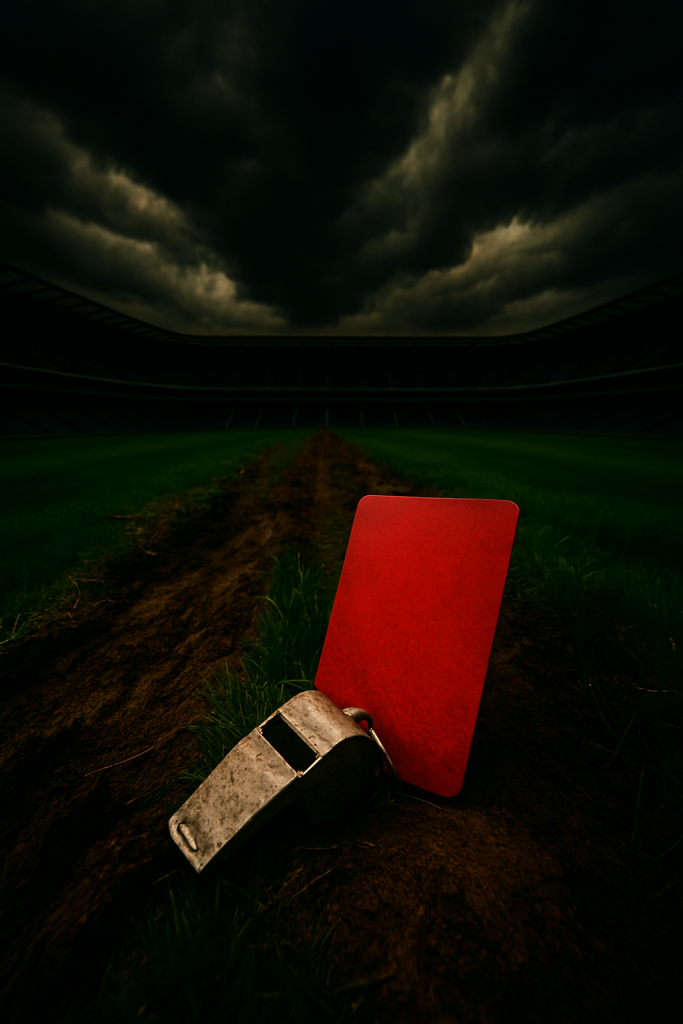
The Role of Agronomists in Stadium Design
Agronomists are essential contributors to stadium projects, yet their expertise is often underutilized or brought in too late. These specialists understand the biological, chemical, and physical needs of turf systems and can guide decisions from the earliest design stages.
Their input affects grass species selection, rootzone composition, drainage layout, and maintenance planning. Involving agronomists during architectural design ensures that turf viability is considered alongside aesthetics and infrastructure. They can model sunlight exposure, airflow dynamics, and microclimate risks based on stadium geometry. Agronomists also advise on soil amendments, microbial inoculation, and irrigation strategies tailored to local climate.
Their knowledge helps prevent common pitfalls—such as installing incompatible grass or underestimating recovery time. During construction, agronomists oversee turf installation, ensuring proper layering, compaction, and root establishment. Post-construction, they guide maintenance regimes, adapting them to seasonal changes and usage patterns.
Their role includes monitoring turf health, diagnosing disease, and recommending interventions. In high-performance venues, agronomists collaborate with groundskeepers, architects, and event planners to balance turf needs with operational demands. They interpret sensor data, conduct soil tests, and adjust inputs based on biological feedback.
Without agronomic oversight, stadiums risk turf failure, increased costs, and reputational damage. Agronomists also contribute to sustainability—reducing chemical use, conserving water, and enhancing soil resilience. Their expertise bridges the gap between design ambition and biological reality. Treating turf as a living system requires scientific stewardship, not just technical installation. Agronomists are not optional—they are foundational to long-term turf success. Their early and ongoing involvement transforms turf from a liability into a performance asset.
Rethinking Stadium Turf as a Performance Asset
Turf is often viewed as a backdrop to sport, but in reality, it is a critical performance surface. Its condition affects athlete safety, game quality, and broadcast aesthetics. Slippery or unstable turf increases the risk of injuries—sprains, strains, and concussions. Poor traction disrupts play, affecting ball control, speed, and tactical execution. Uneven surfaces can alter bounce and roll, undermining fairness and consistency. Turf failures draw public scrutiny, damaging the venue’s reputation and trust.
High-profile incidents—such as match cancellations or player injuries—can lead to media backlash and financial loss. Treating turf as a performance asset means investing in its health, monitoring its condition, and respecting its biological limits. This requires collaboration across disciplines—architecture, agronomy, operations, and scheduling.
Turf must be integrated into design constraints, not retrofitted after problems arise. Maintenance budgets should reflect its importance, with skilled staff and advanced tools. Scheduling must allow for recovery, avoiding overuse and compaction. Performance metrics—such as traction, hardness, and visual uniformity—should be tracked and reported.
Turf should be tested before major events, ensuring readiness and safety. Feedback from athletes and coaches should inform care strategies. Turf integrity is not just a technical issue—it’s a strategic priority. When neglected, it becomes a source of failure and frustration. Rethinking turf as a performance asset changes how we design, manage, and value stadiums.
Conclusion
Sydney Football Stadium’s turf troubles are not an isolated anomaly—they are a symptom of a global disconnect between design ambition and biological stewardship. Despite advanced technologies and hybrid systems, turf remains a living surface that demands time, care, and scientific understanding.
Join the Discussion
Have you played on or seen turf issues affect matches or sports safety at a stadium? What do you think should be prioritized—event frequency or field integrity? Should architects and agronomists collaborate more closely in stadium design?
#StadiumTurf #EliteSportsSurfaces #SydneyFootballStadium #TurfScience #GrassRootsEngineering #FieldIntegrity #SoilHealthMatters #HybridTurfLimits #ClimateAdaptedGrass #ArchitecturalImpact #PerformanceSurfaceDesign #MicrobialSoilSystems #EventSchedulingBalance #AgronomicDesign #PlayabilityMatters
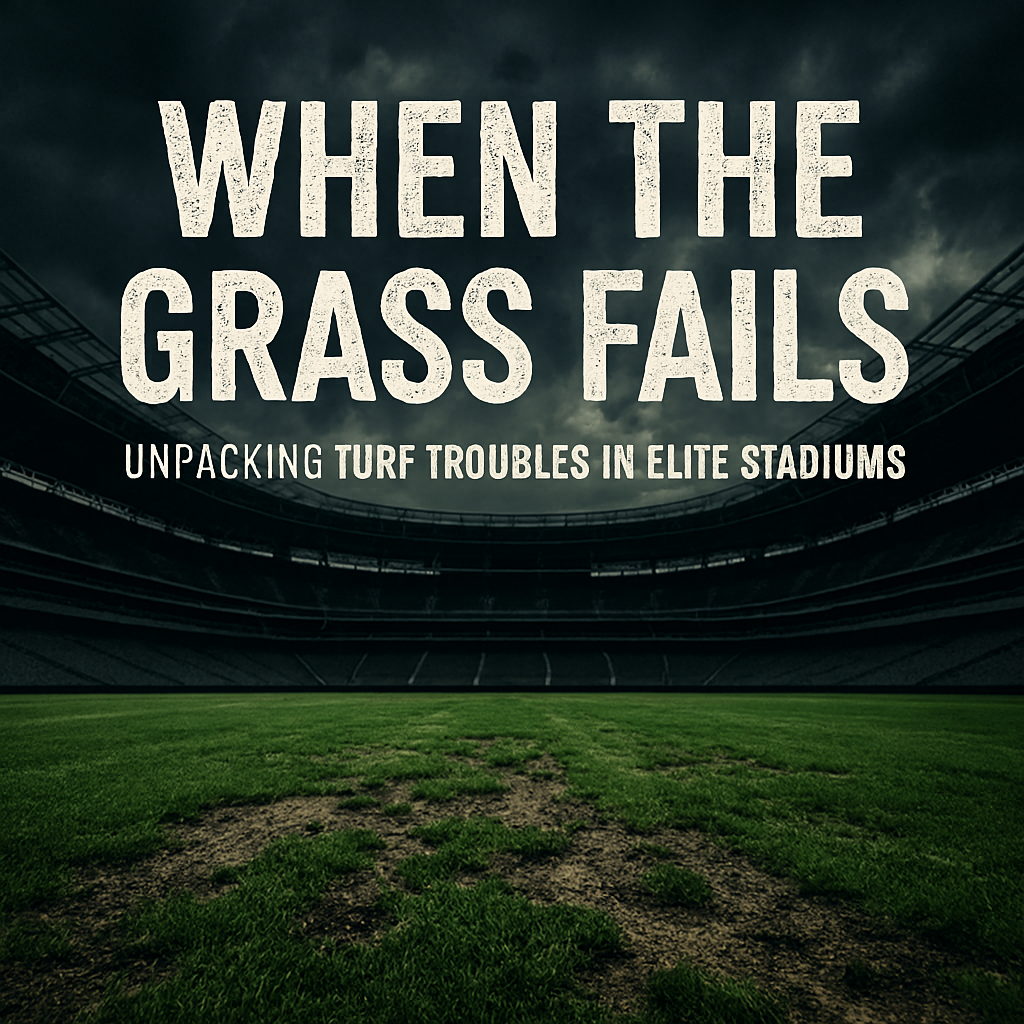














Earth Vs Humans Who’s Smarter Out Of Powerful Entities In 25
[…] belief in human superiority stems from our ability to manipulate environments. We build cities – dam rivers – and engineer genomes. But control is not the same as […]